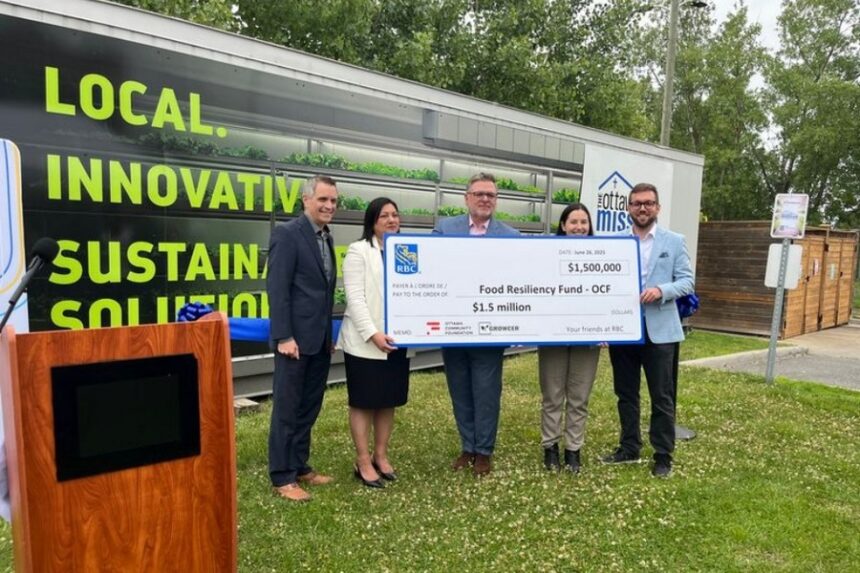I step out of my car on a crisp autumn morning, greeted by the sight of glass greenhouses stretching toward the horizon. Inside one of these structures in Leamington, Ontario—Canada’s greenhouse capital—rows of tomato plants reach skyward under carefully controlled conditions. Water trickles through hydroponic systems, delivering precisely measured nutrients to each plant. Nothing is wasted here.
“We’re growing more with less,” explains Maria Sanchez, a second-generation greenhouse operator whose family transitioned from conventional farming twenty years ago. “My father used to say one acre of greenhouse equals four acres of field production. Now, with our current systems, that ratio is even higher.”
Maria’s operation represents a microcosm of the transformation happening across Canada’s agricultural landscape—a transformation increasingly supported by Sustainable Agriculture Innovation Canada (SAIC), a coalition of industry, academic and government partners dedicated to positioning Canada as a global leader in sustainable food production.
Launched in 2022, SAIC has quickly gained momentum by bringing together diverse stakeholders with a common vision: developing agricultural systems that simultaneously increase production while reducing environmental impacts. Their approach is distinctly Canadian—collaborative, science-based, and pragmatic.
“We believe Canada’s food producers can lead the world in sustainable, high-output agriculture,” says Dr. Wei Chen, SAIC’s executive director. “Our competitive advantage lies in our research capacity, abundant natural resources, and the innovative spirit of our farming community.”
The timing couldn’t be more critical. According to Environment and Climate Change Canada, agricultural activities currently account for approximately 10% of Canada’s greenhouse gas emissions. Meanwhile, Statistics Canada reports that Canada’s population is projected to grow by up to 30% by 2068, creating unprecedented demand for food production.
These dual pressures—reducing environmental impact while increasing output—create what Dr. Chen calls “the perfect innovation challenge.”
Walking through an experimental field at the University of Guelph’s Elora Research Station, I witness one solution taking shape. Here, researchers are developing crop varieties specifically bred to thrive in Canadian conditions while requiring fewer inputs.
“These wheat varieties can deliver comparable yields with 30% less nitrogen fertilizer,” explains Dr. Amrita Srivastava, a plant geneticist, as she gently examines a wheat head. “When you consider that synthetic nitrogen production is energy-intensive and its application can lead to nitrous oxide emissions—a potent greenhouse gas—the climate benefits multiply quickly.”
The innovation extends beyond plant breeding. At the university’s dairy research facility, I observe a barn where sensors monitor each cow’s methane output, helping researchers identify genetic lines that naturally produce less of this potent greenhouse gas while maintaining milk production.
What makes SAIC’s approach distinctive is its integration of these scientific advances with on-farm implementation strategies. The coalition has established ten demonstration farms across Canada’s diverse growing regions, from British Columbia’s Fraser Valley to Nova Scotia’s Annapolis Valley.
At these sites, farmers work alongside researchers to test and refine new approaches under real-world conditions. The results are then shared through farmer-to-farmer networks, accelerating adoption of the most promising practices.
“Farmers are natural experimenters,” observes Jean-Marc Daigle, who operates a 1,200-acre grain farm near Winnipeg and participates in one of SAIC’s demonstration networks. “But we need to know that new approaches work in our specific conditions, and we need support during the transition period when yields might be temporarily affected.”
SAIC has secured $42 million in combined public and private funding to provide this support, offering technical assistance and risk-mitigation payments to farmers implementing verified sustainable practices. The program particularly focuses on regenerative agriculture techniques, precision technology adoption, and circular economy approaches that turn what was once considered waste into valuable resources.
I witness this circular thinking in action at a facility outside Edmonton, where food processing byproducts are being converted into high-value compounds through bioprocessing. Potato peels from a nearby french fry plant—once sent to landfill—now yield starch derivatives used in everything from biodegradable packaging to pharmaceutical applications.
“This facility processes 45 tonnes of byproduct daily,” says operations manager Sanjay Gupta. “That material stays in the economy rather than generating methane in landfills, and it creates additional revenue streams for producers.”
Despite this progress, challenges remain. Access to capital for farm-level investments represents a significant barrier, especially for small and medium-sized operations. Climate change itself poses adaptation challenges, with increasing weather volatility requiring new risk management approaches.
“We’re asking farmers to be climate solution providers while simultaneously adapting to climate impacts,” acknowledges Dr. Françoise Bélanger of Agriculture and Agri-Food Canada, which partners with SAIC. “That’s why support systems must be robust and long-term.”
Indigenous knowledge forms another vital component of SAIC’s approach. The coalition has established an Indigenous Advisory Circle to ensure traditional agricultural practices inform innovation efforts.
“Many Indigenous communities maintained sustainable food systems for thousands of years before colonization,” explains Melissa Hill, a Mohawk agricultural specialist who serves on the advisory circle. “Techniques like companion planting and seasonal harvesting cycles offer profound insights for contemporary challenges.”
As my reporting journey concludes, I join a community dinner at an SAIC demonstration farm near Saskatoon. Farmers, researchers, community members, and industry representatives share a meal grown largely on-site. The conversation flows between technical discussions of soil carbon measurement and heartfelt stories of multi-generational farm transitions.
What strikes me most is the sense of determined optimism. These diverse stakeholders share a belief that Canadian agriculture can evolve to meet seemingly contradictory demands—feeding more people while treading more lightly on the planet.
“We’re not interested in sustainability as a marketing term,” Maria Sanchez tells me as we sample tomatoes from her greenhouse. “We’re building systems that can endure for generations—economically, environmentally, and socially.”
In a world facing intersecting food security and climate challenges, this Canadian collaborative model offers valuable lessons. By bridging scientific innovation, practical implementation, and diverse knowledge systems, initiatives like SAIC demonstrate how agriculture might evolve from being part of our environmental challenge to becoming an essential part of the solution.






